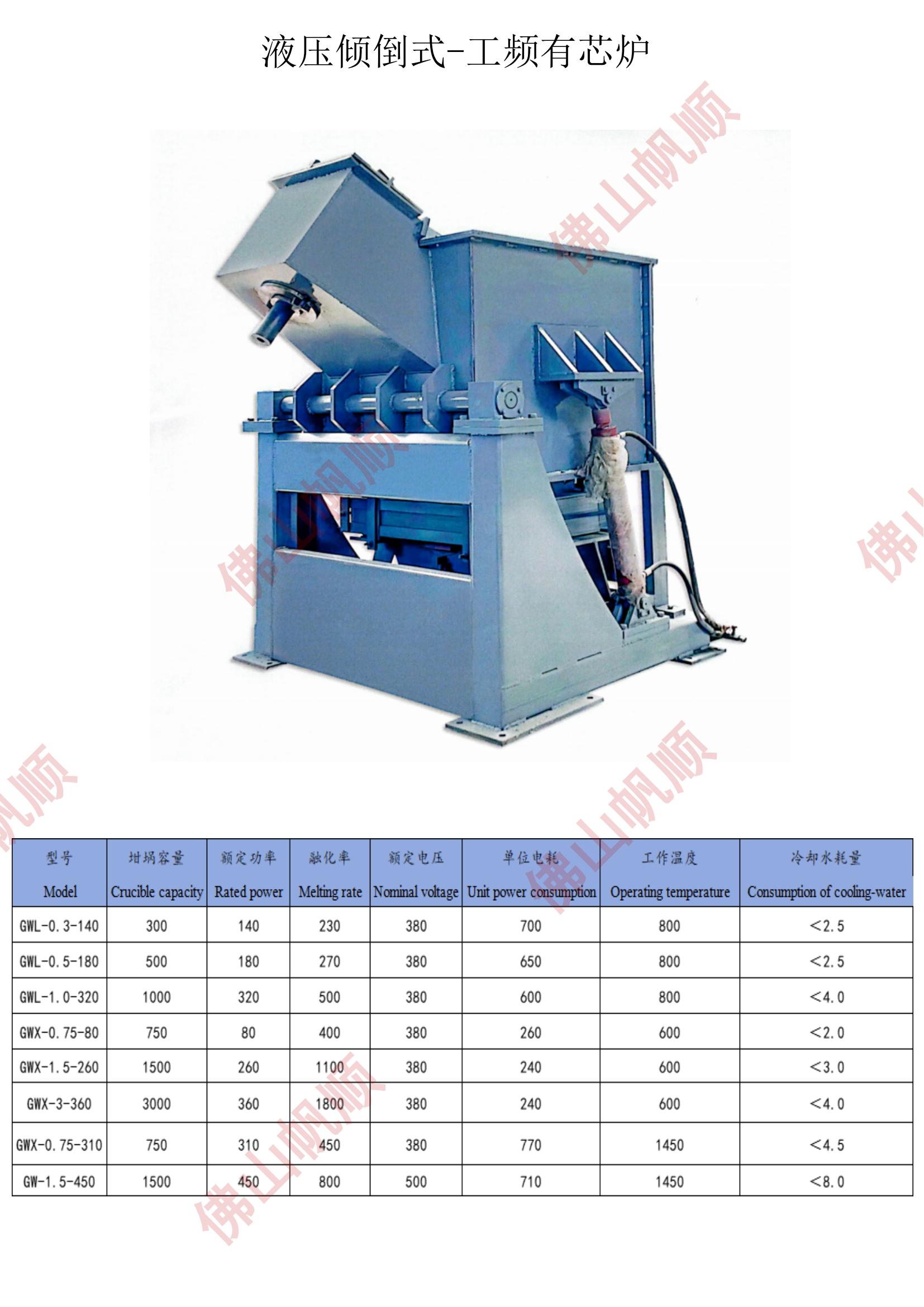To improve the service life of a power frequency cored induction copper melting furnace, several methods and measures can be implemented. These methods focus on optimizing induction copper melting furnace operation, reducing wear, and preventing damage to key components. Here are the main strategies:
1. Proper Maintenance and Inspection
Regular Inspections: Regularly check the furnace components such as the furnace lining, coils, and cooling systems for signs of wear, cracks, or damage. Address any issues early to avoid larger problems.
Scheduled Maintenance: Create a comprehensive maintenance schedule to ensure all parts of the furnace are cleaned, repaired, or replaced as needed. This includes servicing the coil, electrical systems, and cooling mechanisms.
2. Use High-Quality Refractory Lining
Durable Refractory Material: Select high-quality, heat-resistant refractory materials for the induction copper melting furnace lining that can withstand high temperatures and corrosive conditions during the melting of copper. Materials like alumina or magnesia can enhance the lining's durability.
Refractory Thickness: Maintain the appropriate thickness of the refractory lining to provide better insulation and longer service life. Too thin or too thick of a lining can cause premature wear or inefficiency.
Regular Lining Repairs: Over time, refractory lining degrades due to thermal cycling and exposure to molten metal. Prompt repair or replacement of damaged areas will prolong the overall furnace life.
3. Optimize Furnace Operation Parameters
Controlled Power Input: Optimize the power input to prevent overheating the furnace, which can stress the coil and the refractory lining. High-frequency operations should be carefully monitored to prevent damage from thermal stress.
Uniform Melting: Avoid rapid temperature changes that may cause thermal shock to the furnace components. Maintaining consistent melting cycles with gradual heating and cooling helps prevent damage to the lining and induction coils.
Correct Melt Volume: Avoid overloading the furnace beyond its rated capacity, as this can increase wear on the refractory lining and reduce overall furnace efficiency.
4. Effective Cooling System
Maintain Cooling Efficiency: Ensure the induction copper melting furnace's cooling system is functioning properly, especially for the induction coils and surrounding components. Efficient cooling is crucial to prevent overheating and extend the service life of the induction coils.
Monitor Water Flow: The water-cooled system should have consistent flow rates and pressure to avoid overheating, coil failures, or excessive thermal cycling.
5. Improve Coil Design and Protection
Durable Coil Insulation: Use high-quality insulation materials for the induction coils to protect them from heat and electrical stress. Ensure insulation is regularly checked for degradation.
Optimized Coil Design: The coil design should ensure even heating of the charge and minimal electromagnetic stress on the furnace. Optimizing the coil’s design and placement can reduce wear and tear on both the coil and the lining.
6. Prevent Contamination and Corrosion
Minimize Contaminants in Charge Materials: The presence of impurities, slag, and other contaminants in the raw materials can corrode the furnace lining and coils. Use clean, high-purity copper and properly treat scrap materials before charging them into the induction copper melting furnace.
Reduce Oxygen Infiltration: Oxygen exposure during melting can increase oxidation and corrosion. Proper sealing of the furnace and controlled atmosphere melting techniques can reduce oxygen infiltration and extend furnace life.
7. Proper Furnace Startup and Shutdown Procedures
Gradual Heating and Cooling: Follow proper startup and shutdown procedures, including gradual heating and cooling cycles, to prevent thermal shock to the furnace components, especially the refractory lining.
Preheating Lining: Preheat the refractory lining slowly to avoid cracking and wear caused by rapid temperature changes.
8. Utilize Advanced Monitoring Systems
Temperature and Power Monitoring: Employ advanced monitoring systems that can track critical furnace parameters such as temperature, coil current, and power input. Real-time monitoring allows for better control and early detection of issues that can affect furnace performance and lifespan.
Automated Systems: Implement automated controls for power frequency and heating cycles to optimize performance and reduce the risk of human error.
By applying these methods and measures, the service life of a power frequency cored induction copper melting furnace can be significantly extended, leading to more efficient operations, reduced downtime, and lower maintenance costs.

